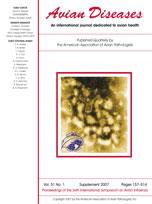The avian influenza virus (AIV) has eight genomic segments (hemagglutinin [HA], neuraminidase [NA], RNA polymerase subunit A [PA], RNA polymerase subunit B1 [PB1], RNA polymerase subunit B2 [PB2], nucleoprotein [NP], nonstructural gene [NS], and matrix protein [M]). The genetic reassortments, recombinations, and mutations lead to a rapid emergence of novel genotypes of the AIVs during their evolution. These emerging viruses provide a large reservoir for pandemic strains. Here we describe a novel computational strategy for genetic reassortment identification. In contrast to the traditional phylogenetic approaches, our method views the genotypes through the modules in networks. Genetic segments with short phylogenetic distance are grouped into modules. Our method is not limited to the number of sequences. We applied this method in reassortment identification of NP segments in H5N1 AIVs. We identified two new potential reassortments for H5N1 AIVs beyond the reported genotypes in literature.
How to translate text using browser tools
1 March 2007
Computational Identification of Reassortments in Avian Influenza Viruses
Xiu-Feng Wan,
Xiaomeng Wu,
Guohui Lin,
Samuel B. Holton,
Racheal A. Desmone,
Chi-Ren Shyu,
Yi Guan,
Michael E. Emch
ACCESS THE FULL ARTICLE

Avian Diseases
Vol. 51 • No. s1
March 2007
Vol. 51 • No. s1
March 2007
avian influenza virus
composition vector
genetic reassortment
genotyping
H5N1
influenza reassortment
phylogenetic analysis




